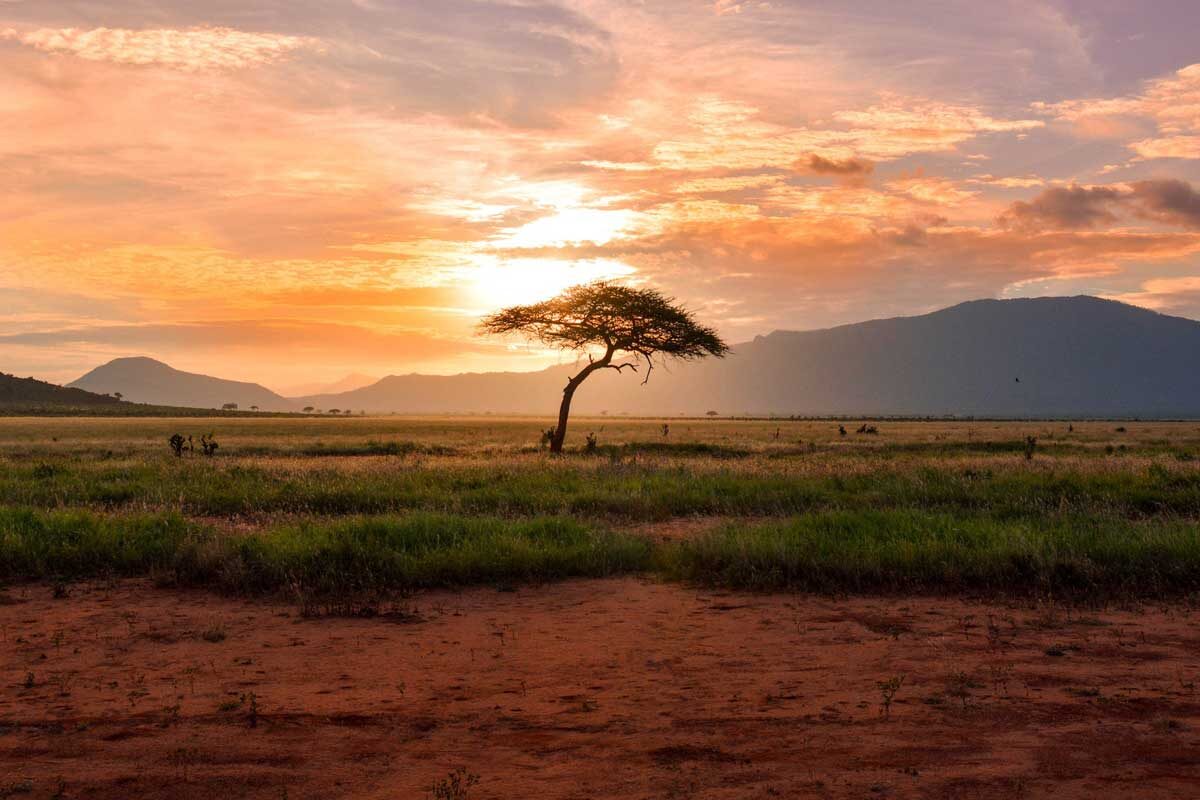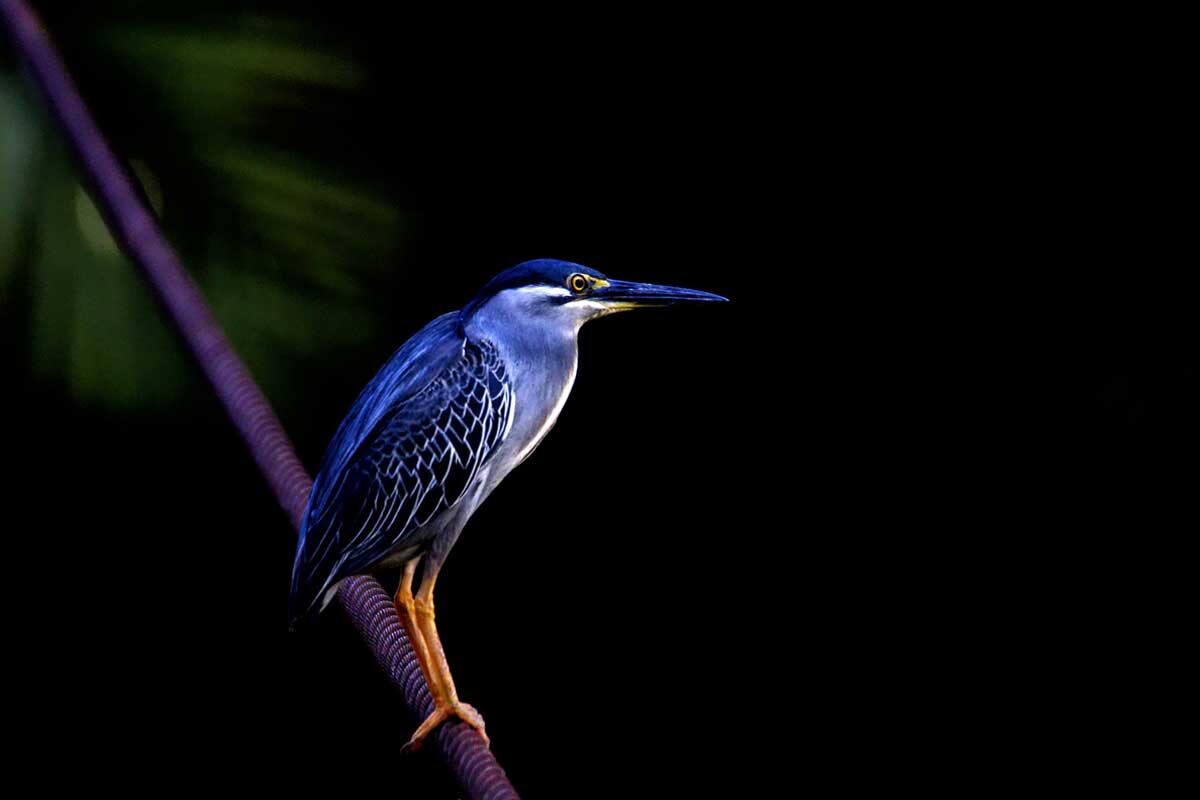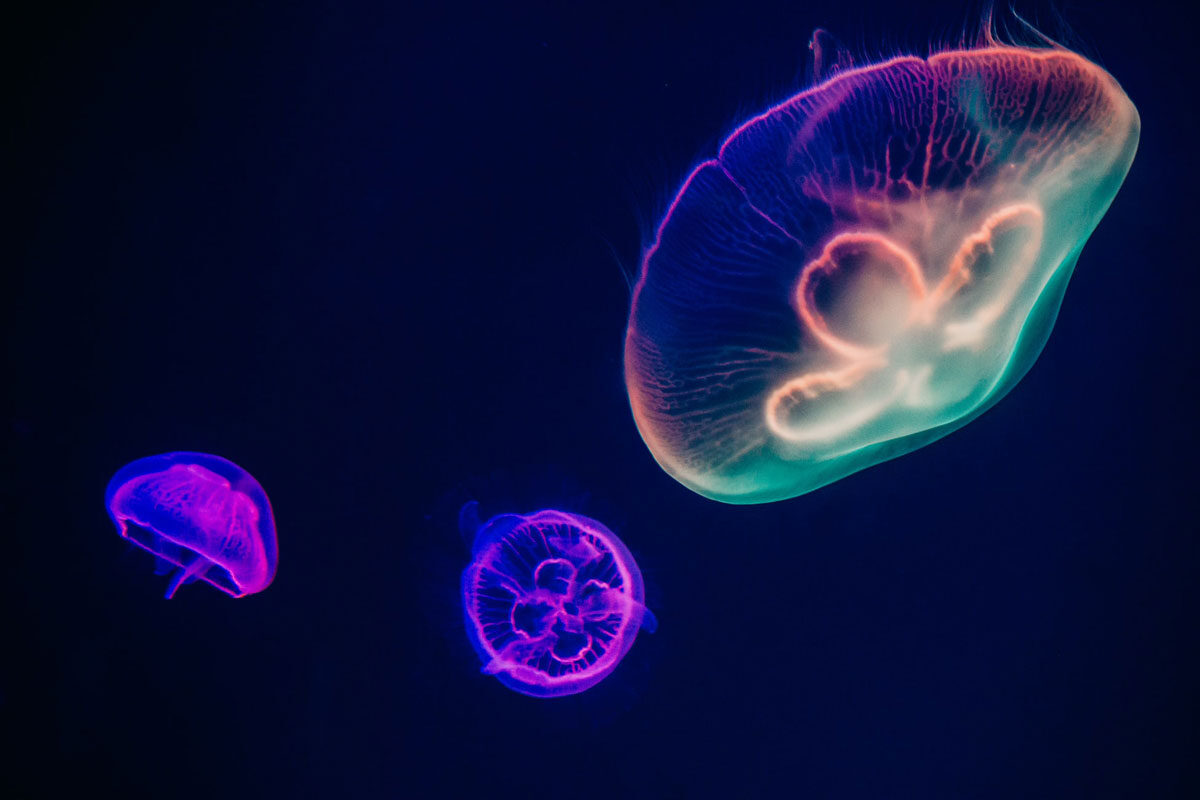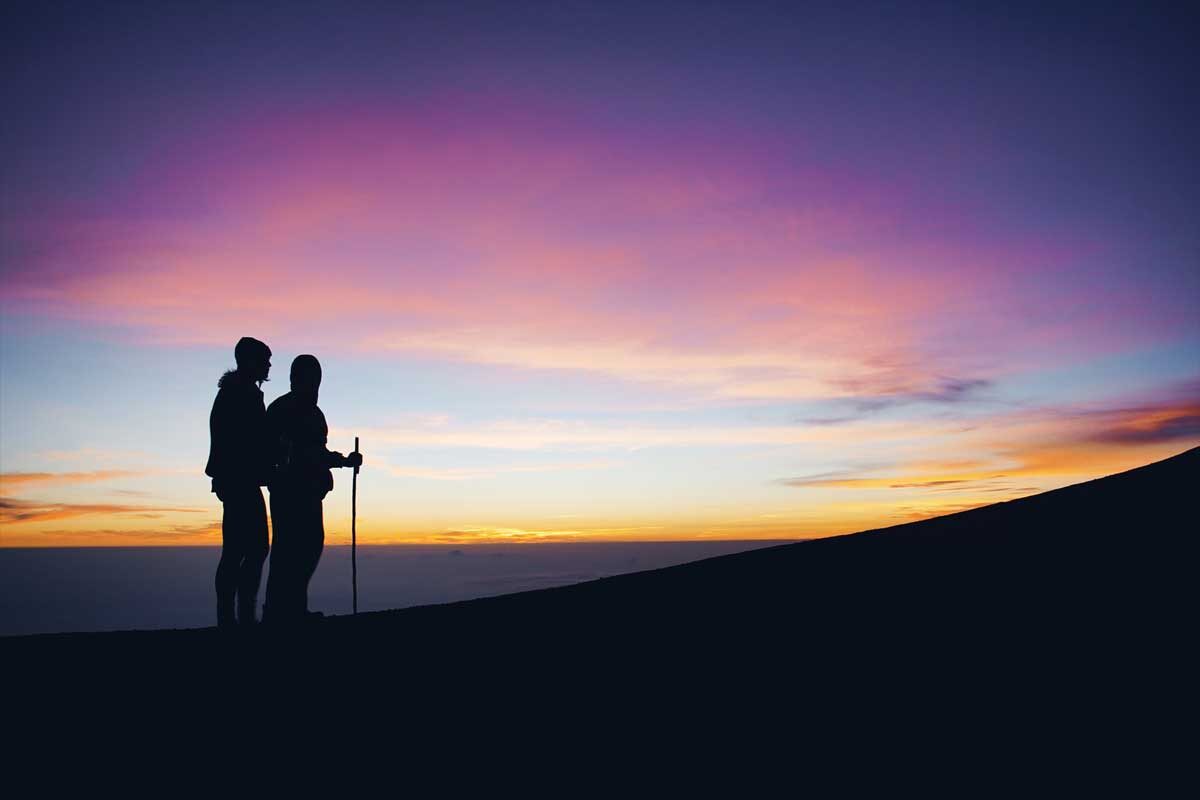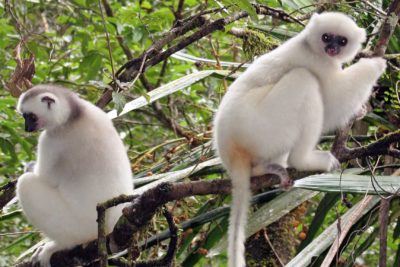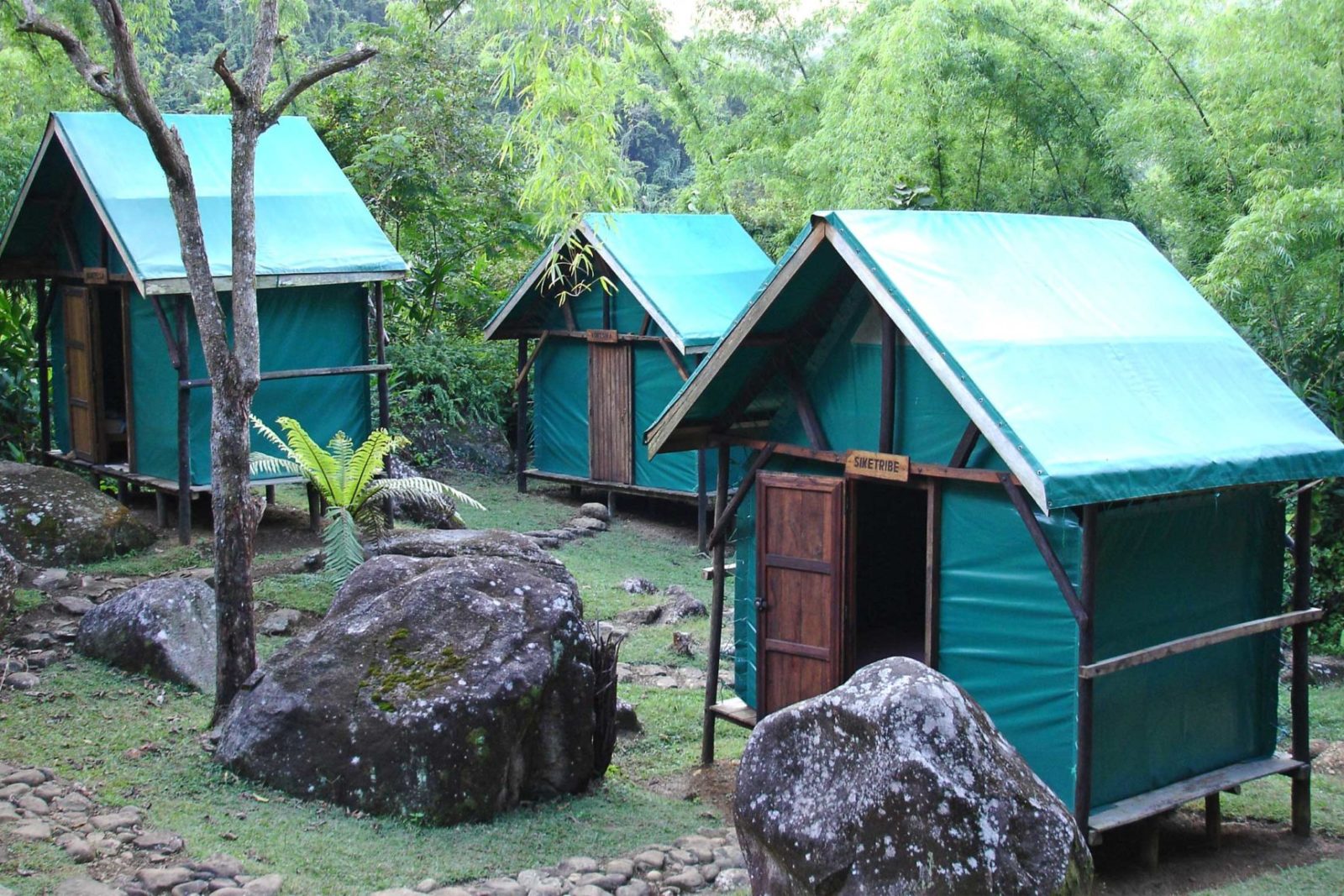
Northern Madagascar
Marojejy Campsites
The Marojejy National Park can only be fully explored by staying at one or all its three campsites on a multi-day expedition from Sambava. The simple but well-run camps are all built within clearings at the different elevations within the park and also enable one to climb to the summit of Marojejy itself.
These are simple but well-equipped campsites with accommodation in little A frame tented bungalows. Beds are either single or bunk beds and all sheets, blankets and pillows are provided, although a sleeping bag can still be taken too. There are basic shared bathroom and shower facilities (running cold water) and a restaurant area where simple meals are served around a common dining table.
The first campsite is Camp Mantella which sits at an altitude of 500 meters above sea level and is around a two hour walk from the park entrance. The second is Camp Simpona which is a further two hours walk up the hillside in dense rainforest and is the best spot for seeing the sifakas. The third is Camp Marojejia which at 800 meters is the closet to the summit and the montane stunted forest habitat.
The conditions at all three camps are similarly basic but all provide the perfect access and immersion into this special landscape. The vast forested mountain landscapes and exceptional wildlife of Marojejy make it one of the most exciting yet least visited protected areas. It has a rugged terrain and simple accommodation, but its wildlife is among the most exceptional. The park is home 77 species of reptile and 70 species of frog and some of the endangered mammals and birds including the all-white silky sifaka and helmet vanga.
The walking conditions are much more strenuous in Marojejy than in most other National Parks in Madagascar and there are some steep and slippery sections between camps two and three and the summit. Much of the impressive wildlife though can be found around the Camps Mantella and Simpona and all the trails can be taken at a gentle pace. It is also worth being aware that Marojejy is one of the wettest regions of Madagascar and waterproofs are recommended in any season. Luggage can be safely stored during your expedition with our local partners in Sambava or Tana.
Facilities
Accommodation in very simple little A frame tented bungalows with single or bunk beds, sheets, blankets and pillows provided. There are very basic shared bathroom facilities (running cold water) and a restaurant area where meals are served around a common dining table.
Local Wildlife
Marojejy is home to a range of both lowland rainforest and montane cloud forest habitats which supports a great diversity of fauna and flora including many endemic species. The park’s most celebrated species is the beautiful and long, white haired silky sifaka, which is almost exclusively found in Marojejy. In addition to the elegant sifakas, visitors also regularly see white-fronted brown and northern grey bamboo lemurs, sometimes nocturnal lemurs and the curious ring-tailed vontsira (mongoose) which regularly visits the campsites, looking for leftovers. Birdlife is also fantastic and includes the dazzling helmet vanga and both the scaly and short-legged ground rollers, several couas, birds of prey and much more. Among the numerous chameleons to look for are the colourful panther chameleon, the elegant and locally endemic Calumma marojezense and seven species of tiny Brookesia leaf chameleons. While other wonderful reptiles to see include the giant leaf-tailed gecko Uroplatus giganteus and beautifully patterned Uroplatus lineatus. Madagascar tree boas are also common and at least 70 species of frogs have been recorded in the park.
Optional Activities
Strenuous walking on the trail network and hikes to the summit of Marojejy itself. The nearby town of Sambava is also famous for its vanilla produce.

Alan Godwin
Area Specialist
Marojejy is one of Madagascar’s wettest regions and waterproof clothing is highly recommended, all other luggage can be safely stored in Sambava or Tana for after the visit.
If you have any questions regarding our Madagascar tours, please feel free to contact me on +44 (0)1803 866965
We had an EXCELLENT honeymoon – the preparations Reef & Rainforest made and the package put together were very well done. All guides excellent.
